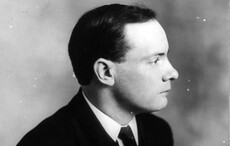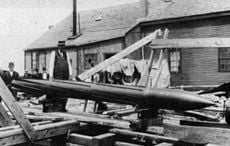Recalling the traditions of Ragamuffin Day, which grew up just a few years after US President Abraham Lincoln declared Thanksgiving a national holiday, when children would go door-to-door seeking candy, dressed as beggars and homeless residents of New York.
I like to joke with my mother about how rough I had it growing up. The joke is that I know I had it a whole lot easier than she did growing up in Brooklyn and New Jersey, where her parents and their five children sometimes lived in one- or two-bedroom apartments.
But even I was taken aback when my mom once told me her brothers and sister used to go begging door-to-door—and it wasn’t even on Halloween!
But it turns out the begging my mother was talking about had nothing to do with poverty. Though it’s not widely remembered these days, there was once a time when Halloween wasn't the primary day for dressing up and knocking on doors to seek tricks or treats.
In the first half of the 20th century, particularly in heavily Irish neighborhoods, the best day for begging -- not to mention often violent and dangerous behavior -- was actually Thanksgiving morning.
Throughout history, Ragamuffin Day saw children dress up and beg door-to-door
This was the day when kids would dress in sloppy clothes and transform into little Ragamuffins. They would knock on doors and shout, “Anything for Thanksgiving!” The hope was that the kindly homeowner would offer up tasty treats -- just as millions of kids hope for the same every Halloween.
Ragamuffin activities were particularly popular in Irish neighborhoods and gave kids a chance, shall we say, to try on different identities.
Jack O’Leary, for example, was an Irish-American mover and shaker in the New York State Conservative Party, but in his memoir "Playing It Well", O’Leary wrote lovingly of wearing his “mother’s face powder, lipstick, and rouge” on Ragamuffin Day.
Indeed, it was very common for young boys to wear makeup or dress up in girls’ clothing on Ragamuffin Day.
Ragamuffin Day was particularly popular among Irish immigrants
Meanwhile, in 1995, a New York Times letter writer named Jim Tierney recalled a particularly Irish spin on Ragamuffin Day.
“On Thanksgiving, we dressed as Ragamuffins -- three Irish-American kids -- and went from backyard to backyard, pub to pub, looking for handouts. But with a difference. We played Irish traditional music on the fiddle and flute and sang and danced to it. We sometimes earned $45 for the day. The best money was made playing ‘The Stack of Barley’ and singing ‘A Nation Once Again.’”
What could New Yorkers a century ago expect to see on this Halloween that was not really Halloween?
The streets might be filled with bizarrely dressed boys and girls not-so-gently requesting money or gifts, “amateur beggars” deemed “a plague” by The New York Times as far back as 1907. At night, children as young as five prowled their neighborhoods dressed as American Indians with makeup, grease paint, or burnt cork on their faces.
They also lit huge bonfires, which led to a fair share of tragedies. In 1913, a six-year-old Bronx boy (wearing his sister’s dress) was severely burned as he danced around a bonfire.
Gunfire and gang fights broke out in Brooklyn as packs of Ragamuffins crossed each other’s paths in 1906 and 1907. Even less explicitly violent behavior created tension.
Ragamuffin Day appears in the famed novel "A Tree Grows in Brooklyn"
In the classic novel "A Tree Grows in Brooklyn," Betty Smith writes, “Most children brought up in Brooklyn before the First World War remember Thanksgiving Day … children went around ‘Ragamuffin’ or ‘slamming gates’ wearing costumes topped off by a penny mask.”
Smith’s main character, Francie Nolan, buys a “yellow Chinaman [mask] with a sleazy rope mandarin mustache.” Her brother Neely wears one of his mother’s old dresses with “stuffed wadded newspapers in the front to make an enormous bust.”
The streets are “jammed with masked and costumed children making a deafening din with their penny tin horns.” Some storekeepers lock their doors to keep the noisy panhandlers ou,t while others unleash “profane lectures on the evils of begging.”
Police and school officials regularly cracked down on Ragamuffins and begging. The ascension of Halloween and calls for more orderly Thanksgiving celebrations seemed to hasten the demise of the Ragamuffin traditions.
But the tradition has not entirely vanished. Every October, community organizers in Bay Ridge, Brooklyn, host a Ragamuffin parade.
* Originally published in 2012. Updated in Nov 2025.




Comments